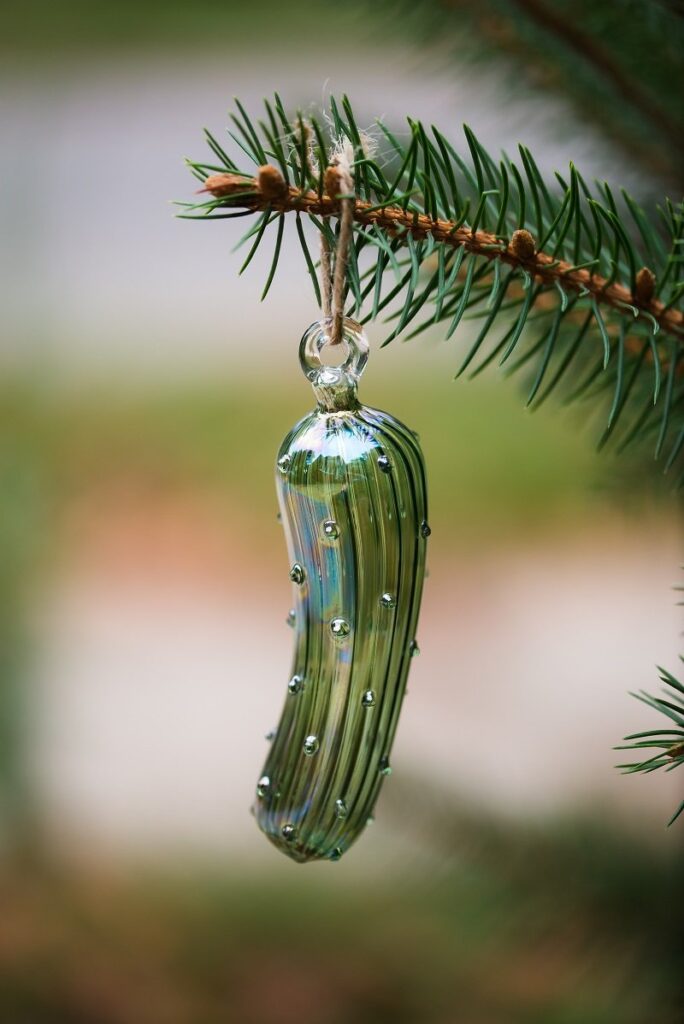Treasured Wisconsin Holiday Traditions
The holidays are a time of celebrations, large and small. Many of us are familiar with the ornateness of our town’s main street around Christmas, lit brightly with dazzling lights, every shop window aglow with silver snowflakes, velvet bows, and wreaths lush with pine and holly.

Many of the ways we decorate and celebrate Christmas have been passed down generationally, adopted by sleepy towns and big cities alike.
“Wisconsin Christmas traditions are heavily influenced by our state’s largest cultural demographic: German and Scandinavian heritage.”
Many of these immigrants brought their Christmas customs to Wisconsin, and they still are strongly represented today.
Christmas Trees
The decorating of the Christmas tree is a German tradition dating as far back as the 16th century, which made its way into American culture by the 1700s. One of Wisconsin’s most famous Christmas trees, the Wisconsin State Capitol Holiday Tree in Madison, became a 40-foot staple of holiday wonderment by 1916.
Evergreen trees are also prevalent in Wisconsin due to the state’s lumbering regions in the Northern counties, scaling down to “cut-your-own” Chritsmas tree farms throughout the state. Many Wisconsin children have grown up with fond memories of donning heavy wool socks and snow boots, trudging out into the “wilderness” to seek out that perfect tree, standing back in awe as their father quickly felled their prize with a bow saw.
Just a nine minute drive from Three Pillars is a local favorite, Riehle’s Tree Farm , a family-owned nursery that’s been growing gorgeous Christmas trees for over 50 years. Snowkist Trees is another local favorite just seven minutes down the road
Pickle Ornaments
After strapping the tree to the roof of your car and driving it carefully to the warmth of home, lots of Wisconsin children grab a steaming mug of hot cocoa and run to help their mothers pull the box of ornaments from the attic. Another German-influenced tradition is the hanging of the pickle ornament ! This sparkling green gherkin is usually hung last, in secret, and the children have to find it among the branches. Whoever does is allowed to open their presents first, and gets an extra present from the man in red himself – St. Nicholas.

The Feast of Saint Nicholas
Celebrated the night of December 5th by many believers throughout Wisconsin, this special day commemorates the early Catholic bishop from 4th century Turkey. St. Nicholas was famous for protecting children and giving gifts to the poor. The holiday was most popular in Germany and Holland. The Dutch call him “Sinterklaas”, which eventually morphed into the legend of “Santa Claus” in America. Wisconsin children are familiar with leaving out their shoes at night so St. Nick could leave candy, nuts, or oranges (which symbolize the gold coins St. Nick would give to the poor.) Alternatively, many mothers and grandmothers took the time to knit special stockings to hang for St. Nick over the fireplace (with care!).
Advent Calendars and Midnight Mass
While St. Nick’s day marks the kickoff of the Christmas season for many Wisconsin families, Southeastern Wisconsin’s families track the progression of the festivities by eating daily chocolates out of their Advent calendar, ending at the prominent Polish celebration of Wigilia – a feast that takes place on Christmas Eve. This has evolved into the ubiquitous “Midnight Mass”, celebrated across denominations and marked by hand bell arrangements, choirs, and sometimes live nativity scenes.
Christmas Day Celebrations
On Christmas morning, many Wisconsinites are awoken before dawn by their children who are eager to open the presents that Santa has left under their tree. Christmas Day is typically reserved for togetherness and family time, including hours of cooking-and eating!
Residents of Scandinavian descent are familiar with the seafood dish known as lutefisk – codfish preserved in lye. Pickled herring on crackers is also a prevailing Christmas hors d’oeuvre. German families again will be familiar with eating a glazed Christmas ham, and “up-north” Wisconsin families will feast on pheasant or turkey brought home by the hunters in the family.
Wisconsin Electric Cookie Book
Lastly, many Wisconsinites will fondly remember the Wisconsin Electric Cookie Book (also known as the Wisconsin Gas Cookie Book) which dated back to the 1930s. This free recipe book is distributed by Wisconsin’s well-known utility company, and many children remember assisting their mothers in local cookie exchanges and licking the batter off the spoon at the kitchen counter (and sneaking a cookie or three before leaving a plate out for Santa).
What other fond family traditions do you have from your Wisconsin childhood that you still celebrate today? Leave us a comment!




